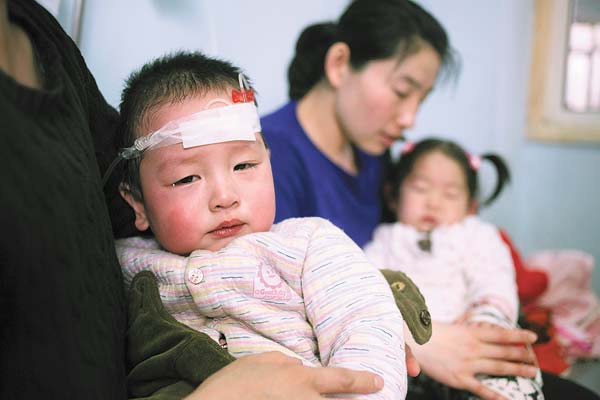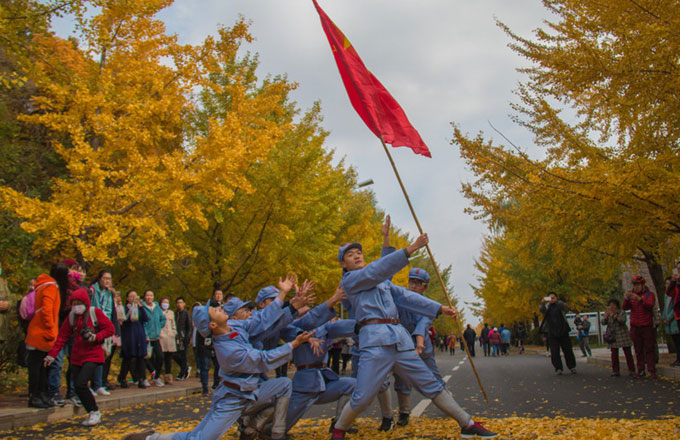Flu awareness comes in from the cold
Li Jia, 18 months old, receives intravenous medication to tackle flu symptons at Ritan Children's Hospital in Beijing. [Wang Jing/China Daily]

Clearly understanding the symptoms is vital to combating the disease, report Shan Juan and Peng Yining.
In 1998, Beijing's funeral services were strained by a higher-than-average number of flu-related deaths, said He Xiong, deputy director of the Beijing Center for Disease Control and Prevention.
"I got a call from the Beijing civil affairs department asking why there had been more deaths than usual. I told them that it was because of a higher incidence of flu," recalled He.
However, despite greater awareness over recent years, "many people are still unable to distinguish flu from a common cold and therefore greatly underestimate the hazard it poses", he warned.
So far this winter, eight flu-related deaths have been reported in China, seven of them in Beijing, according to the Ministry of Health.
On Dec 27, a 22-year-old migrant worker, infected with the H1N1 strain, died, becoming the first flu-related fatality in Beijing of the winter.
According to the Beijing CDC, on Dec 25 the woman had a severe cough but by the next day had developed a high fever.
Because she had difficulty breathing, the patient was sent to the Beijing Chaoyang Hospital on Dec 27, but she later died as a result of acute respiratory failure.
According to reports, the patient was anemic and in poor health when she became infected. The same was true of a second victim of H1N1, a 65-year-old woman in the terminal stages of bone marrow cancer, who died on Jan 4. Neither of them had received a flu vaccination.
The number of cases of flu and related fatalities in Northern China is expected to rise before winter ends, according to Shu Yuelong, director of the National Influenza Center, under the Chinese Center for Disease Control and Prevention.
Cold, dry winters often see a rise in the incidence of flu, according to He Xiong. That rise is exacerbated by the fact that people tend to spend more time indoors, further increasing interpersonal contact, particularly in public places, and allowing more opportunities for the virus to spread, he added.
"Spring Festival, which sees a huge number of people take to the roads for family reunions, also increases the risk," he warned.
From a socioeconomic point of view, the illness "likes the rich but is isolated from the poor", he said, pointing out that the spread tends to be wider in places where economic activity and interpersonal contacts abound. "It's complex and has both natural and social determinants."
Shu was of the same opinion, but ruled out the possibility of a flu pandemic this year because there have been no mutations to the known viruses. The H3N2 and H1N1 strains have predominated this season, with H1N1 being more prevalent in Beijing, he said.
"So far, flu activity is within the normal range compared with previous years and people are familiar with the dominant viral strains," he said, adding that surveillance is ongoing.









